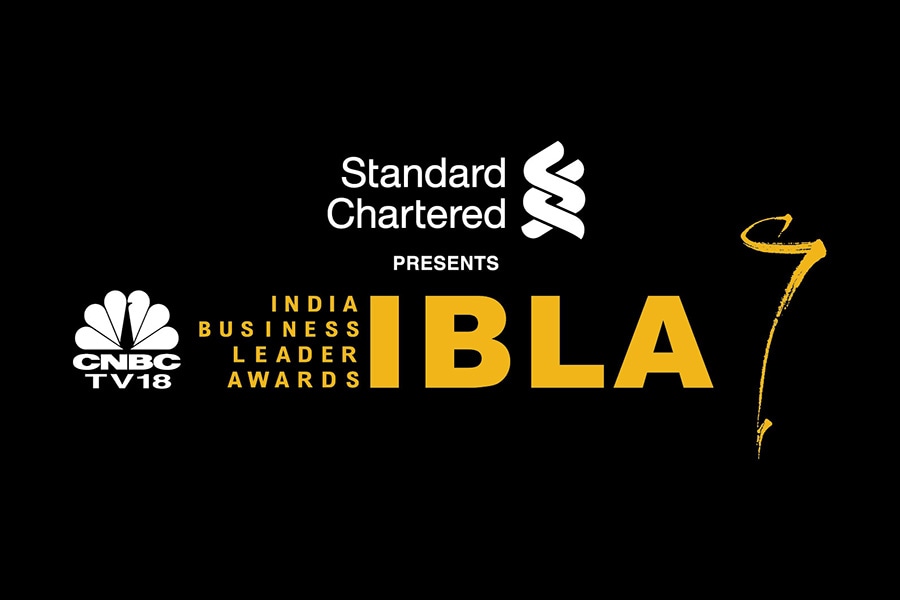Leaders of Change deliberate on "2025: India's Growth Agenda"
16th IBLA Jury, Panel Discussion


CNBC-TV18 completes 21 years in business news journalism and its marquee property, the coveted India Business Leader Awards completes 16 glorious years. The Awards have been acknowledged as the gold standard in recognizing business excellence in India, it follows a rigorous process laid out by the internal teams and deliberated upon by Industry stalwarts, who scrutinize and select the best names in business. The virtual Jury was helmed by Industry veteran Mr. K.V. Kamath and also comprised illustrious names such as Dinesh Khara, Chairman, SBI, Rajesh Gopinathan, Chairman, Tata Consultancy Services, Sanjiv Goenka, Sanjiv Puri, CMD, ITC, Zarin Daruwala, CEO, Standard Chartered Bank, Niassa Godrej, chairperson, GCPL.
The Jury was followed by an engaging panel discussion focussed on “2025: India’s Growth Agenda”. The panel was moderated by Shereen Bhan, Managing Editor, CNBC-TV18. The leaders touched upon several facets that will charter India’s growth plans in the near future, such as digital adoption across sectors, need for tech and innovation to harness the potential of the manufacturing sector, swift government interventions during the pandemic, FDI, global trends in banking and agility of businesses in surviving the pandemic.
Speaking in the context of democracy, Mr. Kamath was positive on the digital adoption which he termed as the “digital super cycle” which has been kickstarted during this Pandemic, will have a ripple effect on various spheres of the economy. Adding to the discussion Mr. Rajesh Gopinathan spoke on synergies between a knowledge-based economy and focussing on manufacturing, he quoted “I believe the future in manufacturing and energy will belong to newer materials and energy resources, and a lot of work is currently going on in the technology space, and the digital side will allow us to access this in a seamless way”. He also emphasised on the need to nurture the start-up ecosystem and he feels directionally regulatory changes are on the right path.
Commenting on innovation in legacy institutions and rise of fintech companies to bridge the access deficits when it comes formal credit, access to credit, Dinesh Khara opined “MSME is something that holds a lot of promise considering it is the largest employer”, he further mentioned a home-grown VC model can give MSME’s a desired fillip on the equity front. He emphasised that the encouragement of the sandbox by RBI and other finance sector regulators shall only further the cause of newer businesses and aid faster technology adoption.
Zarin Daruwala spoke about global trends in digital banking, where Singapore and Hongkong have adopted a pure digital banks approach with no physical branches or networks. She added “Given the internet penetration and the mobile penetration that we are seeing, that can be one big innovation that can come and in fact our own bank has set up the first pure digital bank in Hong Kong, so to my mind that is the disruption that we are going to see in the next few years in India”.
Talking about the consumer facing business, Nisaba Godrej stressed on the need to flatten the curves, be it on the health turf, climate change or inequity. “We need to move really fast and I think when it comes to emerging markets, as consumers consume more, we cannot build the models of the west so we will have to bring a lot of innovation to bear, I think that"s going to be critical to flatten all the curves”. However, she feels the pillars for driving a successful consumer growth model will be sustainability, digitising trade, stronger distribution networks, at the same time keeping a tab on health consciousness when it comes to packaged food industry.
Taking a cue from Nisaba, Sanjiv Puri highlighted the tremendous potential that food processing and agriculture hold for India. “There is a great opportunity to transform this sector and actually create a virtual cycle of consumption investment and employment because agriculture as you know employs about half of India’s workforce” he said.
Puri further believes in viewing the current climate in the agriculture sector through a larger prism, with policy interventions there is a thrust on digitization of agriculture thus enhancing its competitiveness.
Sanjiv Goenka quipped positively on the India growth potential “I think I am more confident about the India story, the India consumption story, the India growth story than ever before” Mr. Goenka feels there is a need for stronger supply chains to strengthen consumer markets.
While Public Private partnerships is the need of the hour, Mr. Kamath feels a more segmented approach would be required to tackle areas of education, healthcare, infrastructure, etc. It will have to effectively customised given the sector specific requirements.
Talking about digital infrastructure, Mr. Gopinathan was of the view “What India is doing is the best example of a common government and private sector kind of operating model so opportunity will lie on top of that as to how to build it up into newer services areas.”
All the leaders unanimously agreed to the Atmanirbhar Bharat scheme, as a step in the right direction as it focusses on increasing efficiencies across sectors, encourages the spirit of self-reliance, and helps in gaining a competitive edge.
Leaders collectively reflected over learnings from the Pandemic and discussed pertinent issues such as work from home, mental health, driving organizational culture, need for human interaction, preparedness for climate change, faster responses to consumer requirements, and the role of digital that will evolve as the future unfolds. Mr. Kamath summarised the session on an optimistic note “The digital super cycle which will be a pillar of growth going forward and I believe that it could contribute to one third of the growth that will happen in the next five to 10 years”.
The pages slugged ‘Brand Connect’ are equivalent to advertisements and are not written and produced by Forbes India journalists.
First Published: Jan 30, 2021, 15:00
Subscribe Now